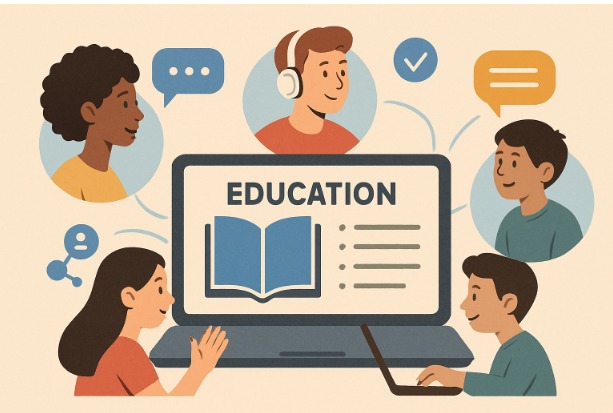Key Takeaways
- Digital education offers new opportunities for flexible, student-centered learning.
- Instructional design plays a crucial role in improving online learning experiences.
- Collaboration between educators, learners, and technology is essential for success.
- Staying informed about emerging technology trends can help educators remain relevant.
- Adopting evidence-based strategies improves engagement and learning outcomes.
Table of Contents
- Why Digital Education Matters
- Key Principles of Instructional Design
- Essential Technology Tools for Online Learning
- Creating Engaging and Accessible Content
- The Role of Collaboration in Digital Classrooms
- Addressing Common Challenges
- Trends and Future Directions
- Conclusion
Why Digital Education Matters
Digital education is rapidly transforming traditional approaches to teaching and learning. As the world becomes increasingly interconnected, accessible, and reliant on technology, the need for flexible and scalable education solutions grows. Online platforms empower students to learn at their own pace, engage with up-to-date resources, and gain skills that are relevant to a digital-first workforce. The flexibility offered by digital education means that geographical and temporal barriers are minimized, ensuring equitable access for a diverse range of learners.
Thoughtfully designed digital learning environments prioritize student-centered experiences. Central to this evolution is the role of instructional designers—professionals who bridge pedagogy and technology to craft engaging, effective online courses. Pursuing advanced programs like UIUC: Master’s in Instructional Design online helps educators and aspiring instructional designers build the expertise needed to thrive in digital education.
As schools and organizations adopt digital-first models, digital literacy and lifelong learning are crucial for both learners and educators. Staying ahead involves technical skills, understanding learning theories, and ongoing professional development. Digital education is about more than platform migration—it’s about improving learning quality, access, and engagement for all students.
Digital transformation helps educational institutions respond to changing student needs and workforce demands. It enables experimenting with innovative teaching strategies and reaching global audiences while gathering data for continuous improvement. Robust online environments keep institutions relevant and help learners develop essential 21st-century skills.
Effective instructional design is key to successful digital education. This involves understanding how people learn, applying learning theories, and aligning goals, assessments, and activities. Principles like backward design ensure students achieve clear, measurable objectives.
Additional principles include chunking information with multimedia, using universal design for learning (UDL) for accessibility, and supporting active learning through discussions, simulations, and projects. Clear communication, timely feedback, and reflection opportunities enhance the online experience.
Essential Technology Tools for Online Learning
The backbone of any digital classroom is robust technology. Learning Management Systems (LMS) like Canvas, Moodle, or Blackboard organize course content, track student progress, and facilitate communication. Synchronous video conferencing tools—such as Zoom, Microsoft Teams, or Google Meet—enable live discussions and group activities. Interactive platforms, such as Kahoot! or Padlet, make lessons engaging and adaptable to various learning styles.
Collaboration tools, digital assessment platforms, and adaptive learning technologies provide educators with the means to personalize instruction and measure learning outcomes in real time. Integrating these tools supports formative assessment, boosts engagement, and allows for differentiation—all crucial for diverse online classrooms.
Creating Engaging and Accessible Content
In digital education, content creation goes beyond simply recording lectures or uploading PDFs. Effective online courses use a mix of formats—videos, podcasts, interactive assignments, quizzes, and discussion boards—to maximize engagement and cater to a variety of learning preferences. Storytelling and real-world case studies can make abstract concepts tangible and memorable.
Accessibility must be considered at every stage. Captioned videos, alt-text for images, readable fonts, and mobile-friendly design ensure resources are usable by all learners. Educators should also strive for culturally responsive materials that represent diverse voices and perspectives. Evidence-based engagement strategies, such as gamification or active learning, drive participation and motivation.
The Role of Collaboration in Digital Classrooms
Collaboration remains essential in digital education, even when learning is asynchronous or remote. Educators must intentionally design opportunities for peer-to-peer and student-to-instructor interaction. Discussion forums, group projects, virtual office hours, and collaborative documents are just a few ways to foster connection and build a sense of community.
Effective collaboration also extends to faculty, instructional designers, and tech support staff, who work together to continuously refine the online learning experience. Regular communication and feedback loops ensure that course content remains relevant, engaging, and aligned with best practices. Strong collaborative environments help learners develop not only content knowledge, but also essential teamwork and communication skills.
Addressing Common Challenges
Despite its advantages, digital education presents unique challenges. Common hurdles include varying levels of digital literacy, inequitable access to reliable technology, and difficulties in maintaining engagement over time. Solutions start with proactive planning: offering orientation sessions, technical support, and accessible resources can help bridge digital divides.
Training for instructors in both technology and online pedagogy enables them to adapt content and teaching methods effectively. Consistent communication, opportunities for formative feedback, and fostering intrinsic motivation can help overcome barriers related to isolation and disengagement. Institutions can also leverage analytics to identify struggling students early and intervene with targeted support.
Trends and Future Directions
As digital education evolves, several trends are shaping its future. Artificial intelligence, personalized learning paths, augmented and virtual reality, and data-driven instruction are enhancing both teaching and learning. Micro-credentials and digital badges offer pathways for continuous learning and demonstrate competencies in rapidly changing fields.
The integration of social-emotional learning and emphasis on equity and inclusivity will continue to guide the development of future online learning environments. Staying informed about these innovations and best practices positions educators to deliver relevant, effective instruction for diverse and evolving student populations.
Conclusion
Digital education has moved from being a supplementary option to a central pillar of modern learning. Success in this environment calls for a holistic approach: robust instructional design, a diverse toolkit of technology, intentional engagement strategies, and a commitment to continuous improvement. Investing in professional growth through programs like a Master’s in Instructional Design online and drawing upon leading resources ensures educators are well-equipped to create dynamic, inclusive, and impactful digital learning environments for all.



